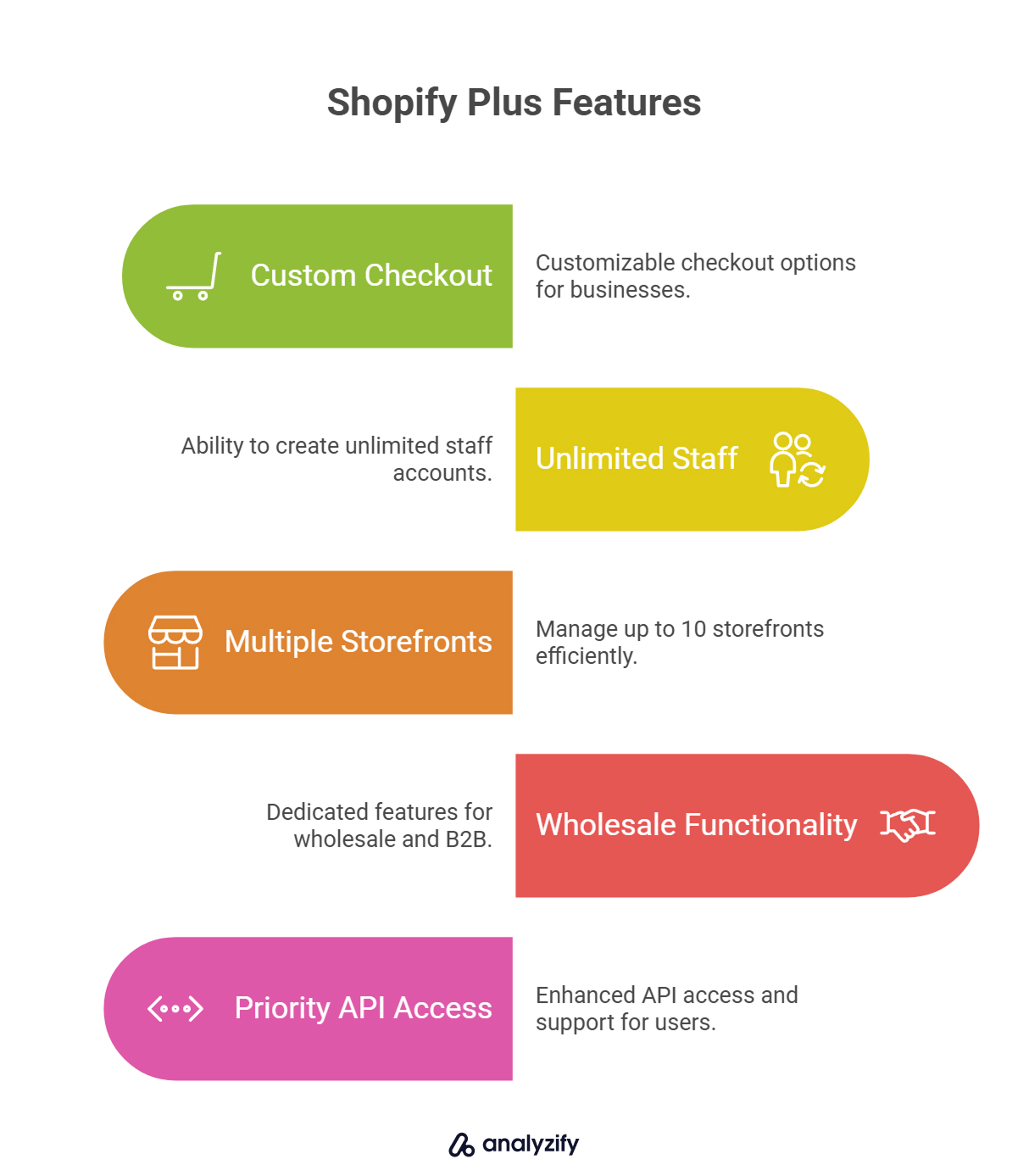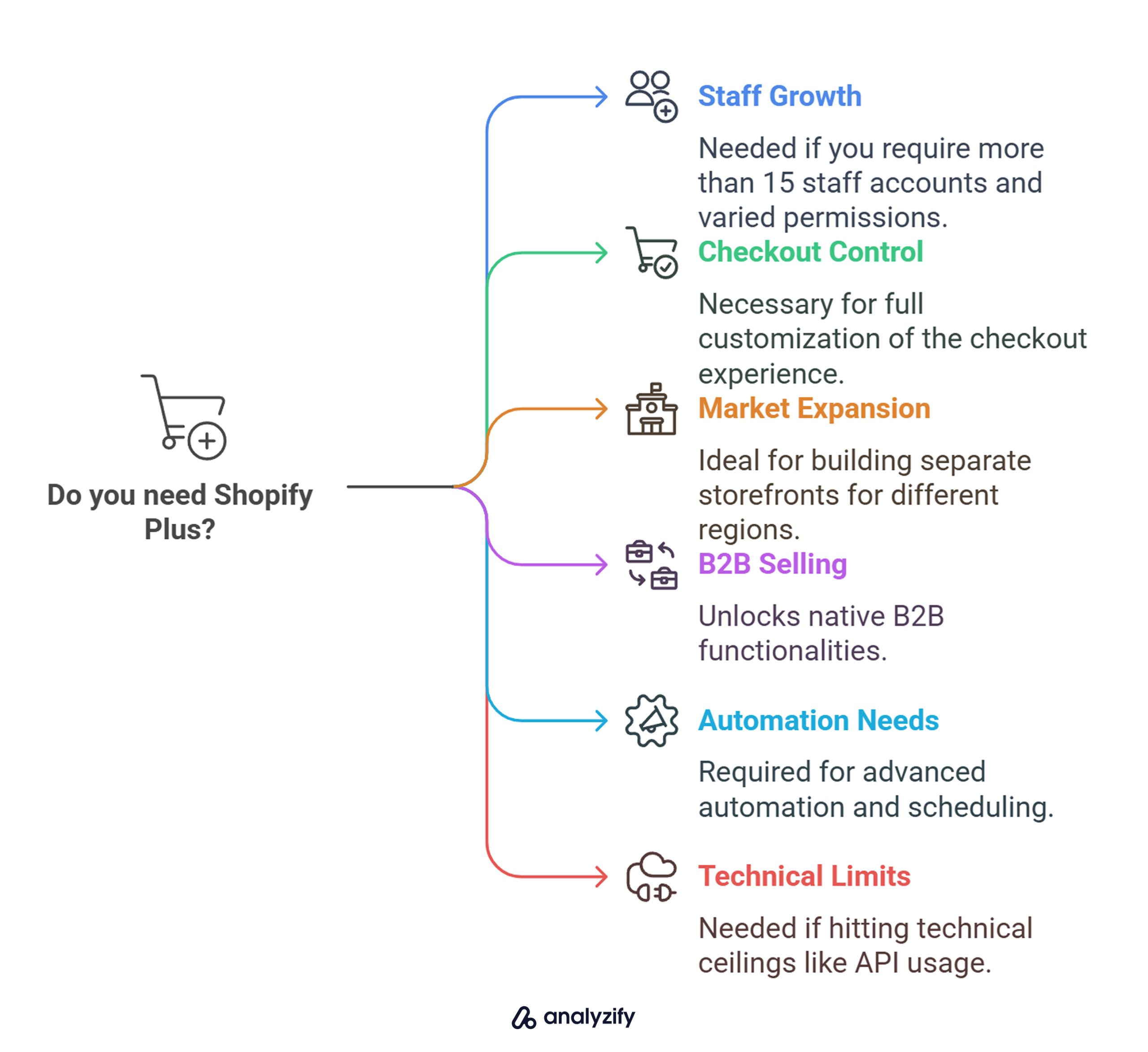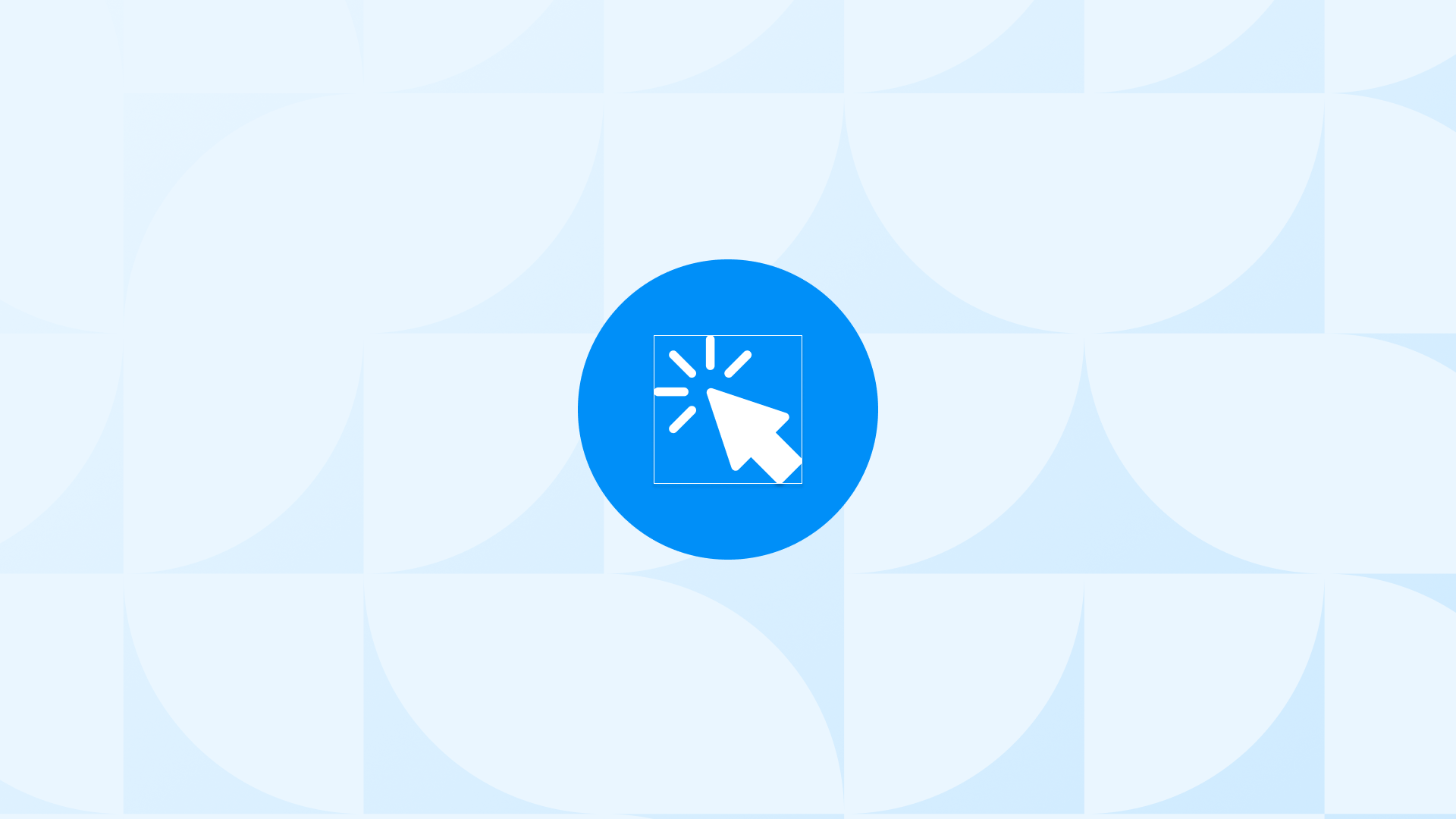If you’ve been researching how to grow your Shopify store internationally or scale up your infrastructure, you’ve probably come across two terms that seem similar — but aren’t: Shopify Plus and Shopify Markets.
This is where things get confusing.
Some people think you have to choose between them. Others assume one replaces the other. In reality, Shopify Plus and Shopify Markets solve very different problems, and in many cases, they’re used together.
In this guide, you’ll get a clear breakdown of what each one does, how they work (and don’t work) together, and when your business actually needs one, both, or neither.

Before we dive in, here are 5 things you’ll walk away knowing:
- Shopify Plus is a premium plan upgrade, not a localization tool — it unlocks features that help you scale.
- Shopify Markets is a localization system, built into all Shopify plans — it helps you sell globally from a single store.
- You can use Shopify Markets with or without Shopify Plus.
- Shopify Plus includes features (like expansion stores and custom checkout) that make Markets even more powerful.
- Shopify Markets helps you expand internationally — Shopify Plus helps you manage complexity once you do.
Let’s start by defining exactly what Shopify Plus and Shopify Markets are — in plain terms.
Bonus: Explore Choosing Between Shopify and Shopify Plus!
1. What Is Shopify Plus? What Is Shopify Markets?
Before comparing them, you need to understand one thing: Shopify Plus and Shopify Markets are not different versions of the same product — they’re completely separate parts of the Shopify ecosystem.
Let’s define each one clearly.
What is Shopify Plus?
Shopify Plus is Shopify’s enterprise plan, designed for fast-scaling, high-volume businesses. It’s not a feature — it’s a paid upgrade that unlocks access to advanced tools, customizations, and infrastructure.

With Shopify Plus, you get:
- Custom checkout via Checkout Extensibility or Shopify Functions
- Unlimited staff accounts
- Up to 10 storefronts (via expansion stores)
- Dedicated wholesale/B2B functionality
- Advanced automation tools like Shopify Flow and Launchpad
- Priority API access, increased limits, and support
It starts at $2,300/month and usually requires a 3-year commitment. It’s built for brands doing serious volume or managing complex operations across multiple teams or regions.
What is Shopify Markets?
Shopify Markets is a set of built-in features (available on all plans) that helps you sell internationally from one Shopify store.

It lets you:
- Show your site in multiple languages
- Display prices in local currencies (with auto or manual conversion)
- Set up custom pricing, products, and tax logic per country
- Assign local payment methods by region
- Configure localized domains or subfolders (e.g., yourstore.com/fr)
- Add duties and taxes at checkout (with or without Markets Pro)
It’s free to enable — though international orders may incur 1.5%–2% currency conversion fees and small duty/tax processing fees if collected at checkout.
🔍 The Key Difference:
- Shopify Plus gives you more control over your store’s infrastructure, team access, and checkout experience.
- Shopify Markets gives you more control over how you localize your store for international customers.
They are not mutually exclusive — and they’re not competing options. Many brands use both as part of their international growth stack.
Bonus: Explore the difference between Shopify Markets and Expansion Stores!
2. Core Differences in What They Actually Do
At a glance, Shopify Plus and Shopify Markets can seem like two ways to expand your store. But once you break it down, they serve very different purposes — and solve very different problems.
Let’s look at the actual feature-level differences.
| Feature | Shopify Plus | Shopify Markets |
| Purpose | Infrastructure & scalability | Localization & international selling |
| Availability | Paid plan upgrade | Included in all Shopify plans |
| Price | Starts at $2,300/month | Free to use, but includes transaction fees |
| Multiple stores | Yes (Expansion Stores) | No (single store with subfolders/domains) |
| Team access | Unlimited staff accounts | Staff limited by base plan |
| Checkout customization | Full access (functions, branding, logic) | Basic customizations only |
| Wholesale/B2B | Built-in tools for B2B and wholesale | Not available |
| International SEO | Supports advanced setups with separate stores | Uses subfolders, hreflang, canonical tags |
| Automation tools | Shopify Flow, Launchpad, Script Editor | Not included |
| Duties/tax collection | Enabled via Markets/Markets Pro | Included |
The Core Idea
- Shopify Plus gives you control, scale, and customization — features built for fast-growing brands that need more backend flexibility and team-wide infrastructure.
- Shopify Markets gives you localization tools to sell globally from a single store — without needing separate setups for each region.
These aren’t interchangeable. In fact, many brands start with Markets and later adopt Plus to manage that growth more efficiently.
Markets doesn’t change your Shopify plan — it’s available on all of them, including Plus.
👉 Example scenario: You run a U.S.-based apparel brand and want to sell in Canada, the UK, and Australia. Shopify Markets lets you localize pricing and payment methods without needing separate stores. But once you reach $2M+ in revenue and need custom checkout flows, B2B ordering, and regional storefronts — that’s when Shopify Plus becomes essential.
Bonus: Learn more about Shopify Fulfillment Network: Costs, Features, and Alternatives!
3. How They Work Together (Not Against Each Other)
One of the most common misunderstandings is thinking you have to choose between Shopify Plus and Shopify Markets.
In reality, these two aren’t competing tools — they’re designed to work together.
🔄 Shopify Markets Comes With All Shopify Plans — Including Plus
When you upgrade to Shopify Plus, you don’t lose access to Shopify Markets. You actually gain more flexibility in how you use it.
Markets remains your tool for:
- Language and currency localization
- Assigning products and pricing by region
- Setting up international SEO with subfolders or country domains
- Displaying local payment methods
- Charging duties and taxes at checkout
Shopify Plus simply gives you more ways to structure, automate, and customize those localized experiences.
✅ What Shopify Plus Adds to Shopify Markets
Here’s what you unlock on top of Shopify Markets once you’re on Plus:
🧠 The Mindset Shift
Think of it this way:
- Shopify Markets is your international storefront toolkit.
- Shopify Plus is your infrastructure upgrade that helps that toolkit scale.
You don’t “pick” one over the other. You start with Markets, and when you hit operational ceilings — checkout, staff, B2B needs, integrations — Plus gives you the tools to go further.
Bonus: Discover “ Top Shopify Alternatives: Compare Pricing & Features”
4. When Do You Actually Need Shopify Plus?
Shopify Plus isn’t for everyone — and Shopify doesn’t pretend it is. But when your store reaches a certain level of scale, complexity, or team size, the limitations of standard plans start to show.
This section is about clarity: not hype, not assumptions — just real signs that it’s time to consider upgrading.

✅ You probably need Shopify Plus if…
💡 Typical upgrade triggers:
If any of these sound like your situation, Shopify Plus is likely the right move:

- $1.5M–$2M+ in annual revenue
- International team structure with multiple managers
- Aggressive B2B growth or wholesale rollout
- Frustration with current checkout limitations
- Need for tightly controlled regional branding or compliance
👉 Reminder: Shopify Plus doesn’t replace Shopify Markets — it extends it. You can still use Markets to manage localization, even as you scale into a multi-store architecture.
5. When Shopify Markets Alone Is Enough
Not every store needs Shopify Plus — especially if you’re still in the early or mid stages of international growth. In fact, for many brands, Shopify Markets on a standard plan is the smartest, most cost-effective way to expand globally without overcomplicating things.
Here’s how to know if you’re in that group.

✅ Shopify Markets may be all you need if…
💡 Example:
You’re a U.S.-based skincare brand doing $750K/year and starting to sell into the UK and EU. You translate your site using Shopify’s Translate & Adapt app, localize pricing, and display the right duties and taxes at checkout — all with Shopify Markets. You don’t need separate stores or a custom checkout yet, so upgrading to Plus would be unnecessary (and expensive) for now.
👉 Bottom line: Shopify Markets gives you most of what you need to sell globally — and it scales surprisingly far. Don’t assume you need Plus just because you’re expanding internationally.
Bonus: Here our hand-picked list of Top 10 Shopify Plus Agencies for Ecommerce!
6. Shopify Plus Features That Strengthen Your Use of Markets
If you’re already using Shopify Markets to manage international selling, upgrading to Shopify Plus doesn’t replace that system — it supercharges it.
Markets handles localization. Plus handles scale, control, and customization — especially across multiple regions, teams, or workflows.
Here’s how the two work in tandem once you’re on Plus:
✅ Expansion Stores + Shopify Markets
With Shopify Plus, you can run up to 10 storefronts under one plan — perfect for markets that need completely different:
- Languages or currencies
- Tax rules or legal structures
- Product assortments or pricing strategies
- Regional marketing or brand tone
Each store can run Shopify Markets internally, giving you the best of both:
- Expansion Store = full separation where needed
- Shopify Markets = region-level control within each store
✅ Custom Checkout Per Region
Markets handles local pricing and payment methods — but only Plus lets you:
- Show different messaging per country at checkout
- Offer market-specific upsells or incentives
- Implement conditional logic (e.g., hide a shipping option for Australia)
This helps boost conversions and removes friction in key regions.
✅ Automation Across Markets
Shopify Plus gives you Shopify Flow, which automates tasks across stores and regions:
- Tag international orders by country
- Trigger follow-ups or reviews based on language
- Assign region-specific workflows for fulfillment or support
You also get Launchpad, which helps schedule global campaigns across time zones — without logging in manually at midnight.
✅ Multi-Store SEO and Domain Strategy
Shopify Markets on standard plans uses subfolders (yourstore.com/uk). With Plus, you can:
- Assign separate domains to each expansion store (yourbrand.co.uk, yourbrand.jp)
- Build stronger local SEO profiles by region
- Avoid overlap or duplicate content across markets
👉 Markets gets you in the game. Plus gives you the tools to win at scale.
7. Final Comparison: Which One Solves Which Problem?
By now, it’s clear: Shopify Plus and Shopify Markets serve different roles. One isn’t better than the other — they just solve different problems at different stages of growth.
Here’s a final side-by-side comparison to help you quickly identify which tool addresses which need:
| Problem You're Facing | Use Shopify Markets | Use Shopify Plus |
| Sell in multiple countries with local pricing & taxes | ✅ Yes | ✅ Yes |
| Translate your store into multiple languages | ✅ Yes | ✅ Yes |
| Assign local payment methods by region | ✅ Yes | ✅ Yes |
| Set up a different domain for each region | ❌ No | ✅ Yes (via stores) |
| Fully customize checkout per market | ❌ No | ✅ Yes |
| Run separate stores for each country/brand | ❌ No | ✅ Yes |
| Add more than 15 staff accounts | ❌ No | ✅ Yes |
| Sell wholesale or manage B2B customers | ❌ No | ✅ Yes |
| Automate multi-region workflows and sales campaigns | ❌ No | ✅ Yes |
| Manage high-traffic launches in multiple time zones | ❌ No | ✅ Yes |
| Budget-sensitive or early in international testing | ✅ Yes | ❌ No |
Shopify Plus vs. Shopify Markets: FAQ
Here are the most common questions people ask when comparing Shopify Plus and Shopify Markets.
Do I need Shopify Plus to use Shopify Markets?
No — Shopify Markets is available on all Shopify plans, including Basic, Shopify, and Advanced. You don’t need Shopify Plus to use it.
However, Plus gives you access to additional tools that enhance how you use Markets, such as expansion stores and custom checkout features.
Can I use Shopify Plus and Shopify Markets at the same time?
Yes. In fact, that’s how many high-growth brands operate. Shopify Markets handles localization within each store, while Shopify Plus allows you to run multiple stores, customize checkouts, and manage international teams more effectively.
Is Shopify Markets free?
Yes, but there are some additional costs to consider:
- Currency conversion fees (typically 1.5%–2% on foreign orders)
- Duty/tax calculation fees (if collected at checkout) There’s no added base fee to enable Shopify Markets.
Can Shopify Markets handle multiple languages and currencies?
Yes. You can show your store in different languages and currencies depending on the visitor’s location. Translation must be added manually or through apps, but the infrastructure supports it out of the box.
When should I upgrade to Shopify Plus?
Consider upgrading if:
- You need more than 15 staff accounts
- You want full control over checkout
- You plan to run separate stores per region

































